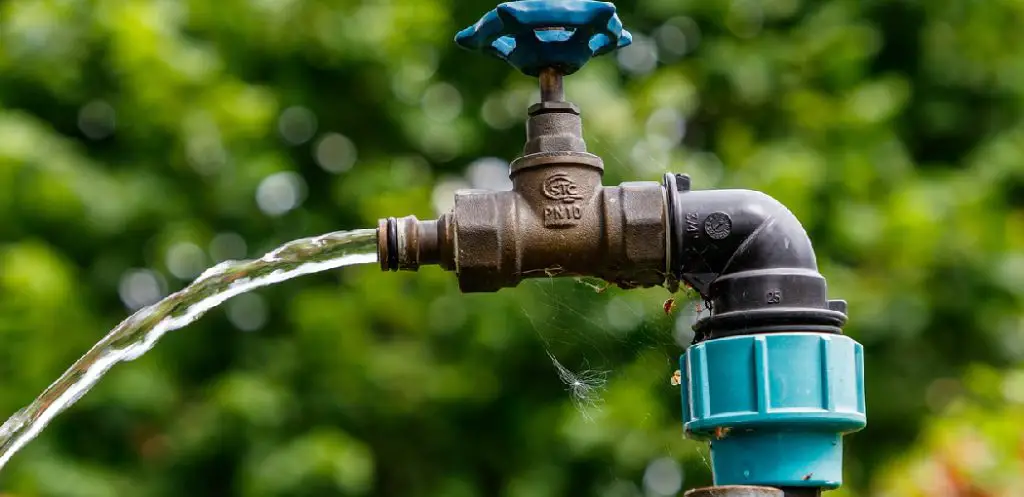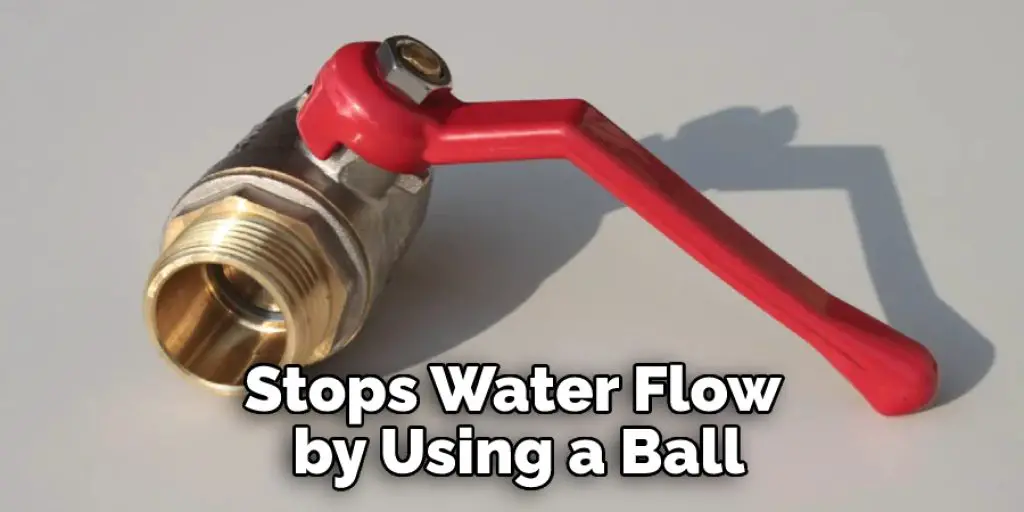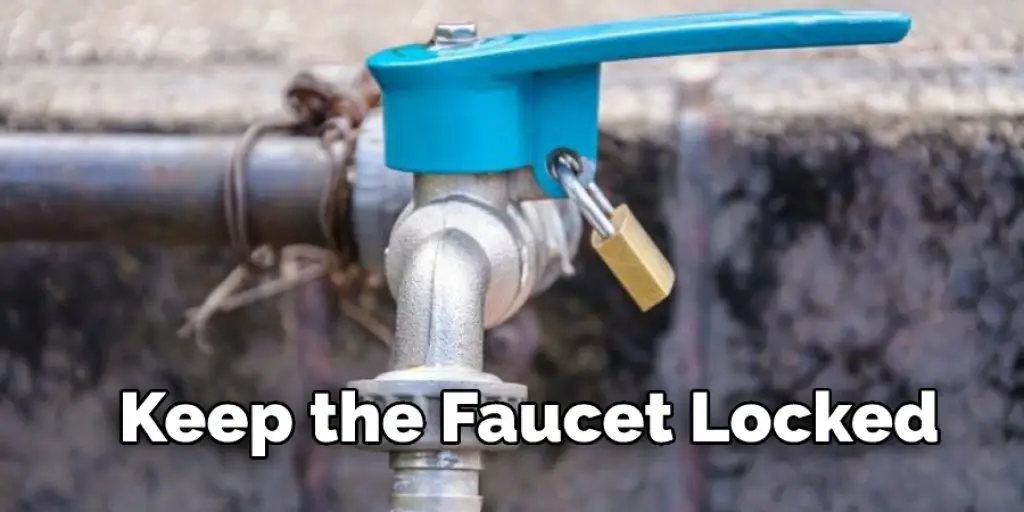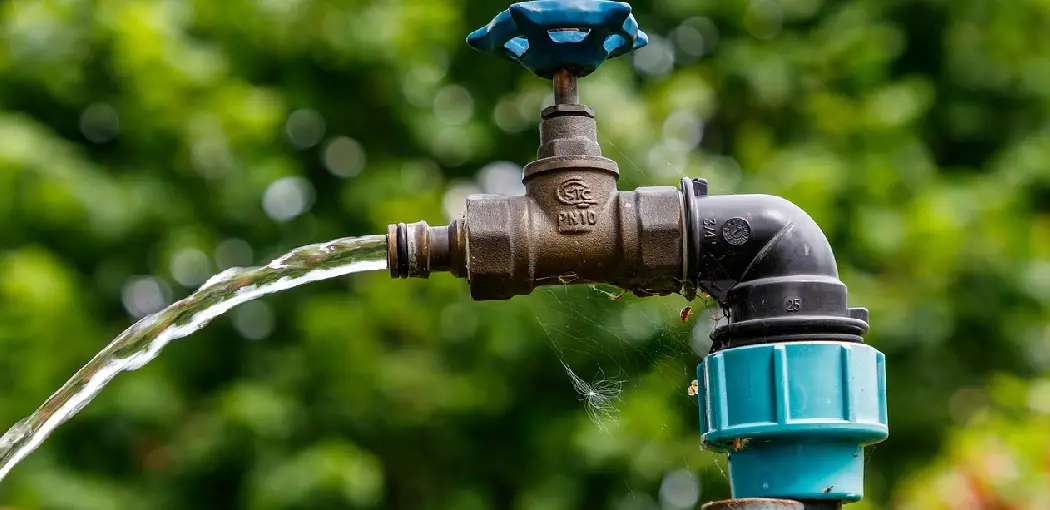Water faucets located outside of your home can become an easy target for vandals and burglars. These criminals know that by simply turning on the full water blast, they can quickly cause significant damage to your property. To help prevent this type of damage, it is essential to learn how to lock outside water faucet. Keep reading to find out how you can protect your outside water faucets from being turned on and causing damage to your home.

Many homeowners are unaware that they can lock their outside water faucets to prevent them from being turned on and causing damage to their homes. By following the steps below, you can learn how to properly lock your water faucet and protect your property from potential harm.
Why Would I Want To Lock My Outdoor Faucet?
There are many reasons why you might want to lock your outdoor faucet. For example, maybe you have a vacation home, and you’re worried about someone coming onto your property and using your water. Or perhaps you have young children who like to play in the backyard, and you don’t want them turning on the faucet without your knowledge. Whatever the reason, it’s easy to lock your outdoor faucet so that no one can use it without your permission.
A Detailed Guide on How to Lock Outside Water Faucet
Method 1: Lock a Faucet with a Padlock
Step 1: Choose the right padlock. Not all locks are created equal, so you’ll want to ensure you have the right type for your faucet. There are two types of locks: those that go over the spout and those that fit around the handle. If you have an older faucet with screw-on handles, you’ll need a lock that fits around the handle. If your faucet has a lever or knob on top, you can use either type of lock.
Step 2: Determine where to place the lock. Once you’ve chosen the right lock, it’s time to determine where to put it. There are two places where you can put the lock on most faucets: on the spout or the handle. If your faucet has a lever or knob on top, you’ll want to place the lock on the spout. If your faucet has screw-on handles, you’ll want to place the lock around the handle.
Step 3: Open the padlock and fit it around the spout or handle. Ensure that the lock’s shackle is facing down so it doesn’t interfere with the water flow.
Step 4: Close and lock the padlock. Turn the key to close and lock the padlock.
Method 2: Try a Hose Clamp
If you don’t have a key to the faucet or it’s not possible to get one, you can use a hose clamp to lock the faucet. This method is a bit more work, but it will keep someone from turning on the water.
Things You’ll Need:
- Hose clamp
- Wrench
- Pliers
Step 1. Close off the water supply to the faucet. You can do this by turning off the valve that supplies water to the faucet or shutting off the main water supply to your home.
Step 2. Disconnect the hose from the faucet.

Step 3. Place the hose clamp around the faucet handle and tighten it with a wrench. Make sure it’s tight enough so that it can’t be turned.
Step 4. Reconnect the hose to the faucet and make sure it’s secure.
Step 5. Turn on the water and check for leaks. If there are any leaks, tighten the hose clamp with pliers until they stop.
Your faucet is locked, and no one can turn it on without a key. Tell neighbors or family members who might need access to the faucet so they know how to unlock it.
Method 3: Use a Pipe Wrench to Lock the Faucet
If you don’t have a lock to fit your faucet, you can temporarily use a pipe wrench to stop the water from flowing.
Things You’ll Need:
- Pipe wrench
- Lock
- Screwdriver
Step 1. Close the water valve at the main water line. This will stop the flow of water to your faucet.
Step 2. Use a screwdriver to remove the screws from the faucet handle.
Step 3. Slide the lock over the faucet handle and reattach the screws. Make sure that the lock is upright so that it can’t be turned.
Step 4. Close the water valve at the main water line.
Step 5. Open the faucet to make sure that it’s locked in place. If it’s not, tighten the screws on the lock until it doesn’t move.
You Can Check It Out to Remove Mulch and Replace with Rocks
Method 4: Use a Ball Valve

A ball valve is a device that stops water flow by using a ball that blocks the opening. This is an easy method to use and can be done by anyone.
Things You’ll Need:
- Ball valve
- Wrench
- Pipe cutter
Step 1. Close off the water supply to the faucet by turning off the valves under the sink.
Step 2. Cut the pipe extending from the faucet with a pipe cutter. Make sure to cut it as close to the faucet as possible.
Step 3. Remove any burrs or rough edges on the pipe ends with a file.
Step 4. Install the ball valve by tightening the screws with a wrench.
Step 5. Open the water supply valves and test the faucet by turning it on and off.
Method 5: Use a Pipe to Lock the Faucet
This is the last method we’ll be covering on how to lock outside water faucets. If you have a pipe, you can use it to lock the tap.
Things You’ll Need:
- Pipe
- Tape
- Knife
Step 1. Close the water valve at the main water line. This will stop the flow of water to your faucet.
Step 2. Cut a piece of pipe long enough to reach from the faucet to the ground.
Step 3. Wrap tape around one end of the pipe to form a tight seal.
Step 4. Insert the other end of the pipe into the faucet and twist it until it’s tight.
Step 5. Close the valve on the pipe.
When the faucet is turned on, water will flow through the pipe and out the bottom. To turn off the faucet, twist the pipe. This will lock it in place and keep it from turning.
You can also use this method to lock your hose bibbs. Just cut a longer piece of pipe and wrap the tape around both ends. Then, insert one end into the bibb and twist it until tight. Finally, close the valve on the pipe to lock it in place.
Now you know four different ways to lock outside water faucets! Try using one of these methods to protect your home from water theft.
Tips:

If you have children or pets, it’s good to keep the faucet locked when it’s not in use.
– Make sure also to lock the faucet when you’re leaving your home for an extended period. This will help prevent any accidental water usage.
– If you have a garden hose attached to the faucet, remove it before locking the faucet. This will help avoid any damage to the hose.
– If you have any questions about how to lock your outside water faucet, contact a qualified plumber. They’ll be able to help you with all your locking needs.
How Do You Lock the Main Water Valve?
If you want to know how do you lock the main water valve, there are a few simple steps you can follow. Locking the main water valve is crucial to protect your home from potential water damage. Here are the steps that you need to take:
1. Find the main water valve in your home. The main water valve is usually located near the front of your house, close to the street.
2. Turn off the main water valve. This can be done by turning the valve counterclockwise until it’s in the “off” position.
3. Lock the main water valve. You can do this by using a padlock or a key lock. Make sure that you have a key to the lock to access the valve in case of an emergency.
If you have any questions or concerns, please don’t hesitate to call a professional plumber. They will be able to help you with all your locking needs.
Can’t Find My Main Water Shut Off Valve?

If you can’t find your main water shut-off valve, don’t worry! You can still lock your outside water faucet to prevent any accidents. Just follow these simple steps:
- Locate the valve that shuts off the water to your house. This is usually located near where the water meter is.
- Close the valve by turning it clockwise.
- Find the outside water faucet in your home. It’s usually located near the foundation or the side of the house.
- Lock the faucet by turning it counterclockwise. You should feel it “click” into place when you’ve turned it far enough.
Now you can rest easy knowing that your outside water faucet is locked and can’t be turned on by accident.
Do All Outdoor Faucets Have Shut Off Valves?
All outdoor water faucets do not have a shut-off valve. Therefore, it is best to find the main water shut-off valve for your house and close it when you are not using the outdoor faucet. This will help to conserve water and prevent any leaks from occurring. Contact a plumbing professional for assistance if you do not know where the main water shut-off valve is for your house.
Conclusion:
By following these simple methods on how to lock outside water faucet, you can protect your home from water damage and keep your faucet functioning properly for years to come. If you have any questions or need help with this process, don’t hesitate to reach out to a professional plumber. Thanks for reading!
You may read also How to Remove Flow Lock Without Key

